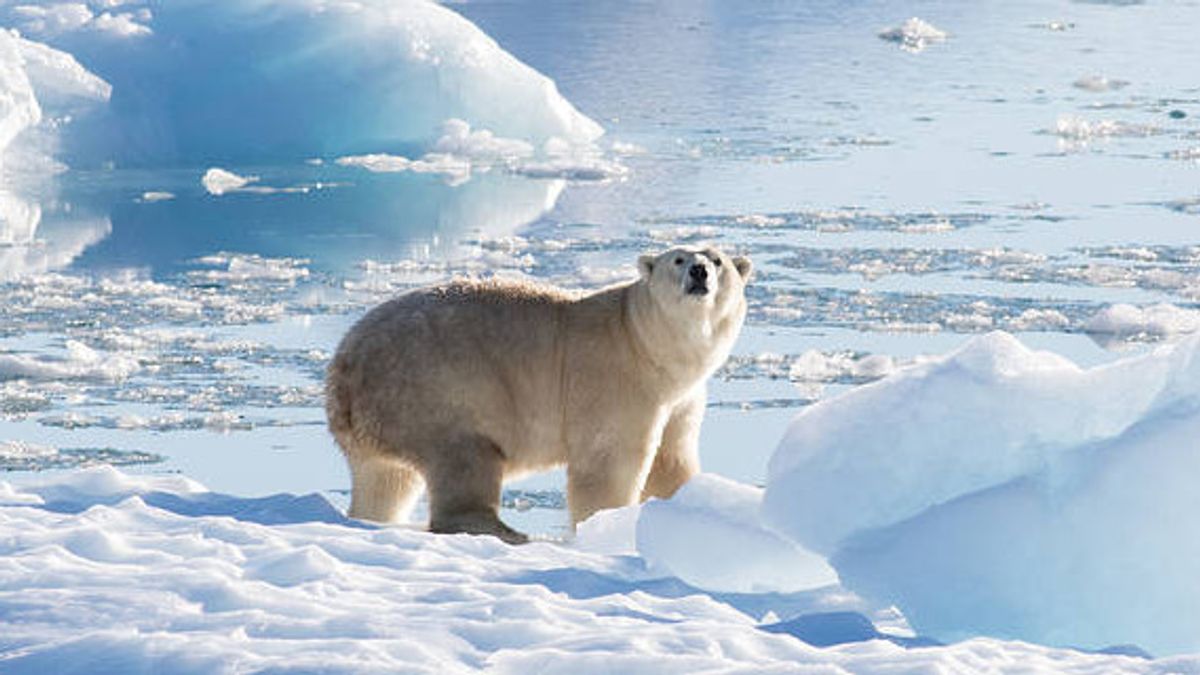JAKARTA - NASA launched a key instrument for its climate research, called the Earth Surface Mineral Dust Source Investigation (EMIT). The launch was made using SpaceX's Dragon spacecraft on the evening of Thursday, July 14 from the Kennedy Space Center.
The dust probe, now aboard the International Space Station, could help researchers solve climate mysteries that have stymied scientists for years.
Dust is a very strong force in the atmosphere. That's why NASA is determined to better understand it. Those tiny particles drift from deserts and other dry areas, and depend on many different factors. They can have a cooling or warming effect on our planet.
"EMIT is studying mineral dust because it is currently an unknown element," said Robert Green, EMIT principal investigator and Jet Propulsion Laboratory senior research scientist, at a July 13 briefing about the mission, as quoted by The Verge. "It's not just the magnitude, how much hot or cold it is, but whether it heats up or cools down is completely uncertain."
One of the reasons why dust is a mystery is that dust particles appear in a variety of colors. Maybe dark red, because it contains iron. While dust particles containing clay, are usually lighter in color.
The lighter dust particles would reflect sunlight, helping to cool the planet. At the opposite end of the spectrum, dark dust particles absorb solar energy and have a warming effect.
As climate change has heated things up to dangerous levels for life on Earth, scientists really want to know if dust is also helping or interfering with efforts to stabilize global temperatures.
That's where EMIT can help. It will use an instrument called an advanced imaging spectrometer to collect more than a billion measurements over the next year, recording the composition of dust around the world.
To do this, the instrument will actually measure the spectrum of light reflected from the surface of our planet. This will tell scientists how much dust in the atmosphere comes from dark or light minerals.
Hopefully, it will eventually solve the mystery about the cumulative effect of dust on the planet, as well as the warming or cooling effect it may have from one region to another.
Answering those questions is critical to building better climate models, which researchers use to try to understand what climate change might hold for us in the future. For now, climate models generally consider dust to be yellow — an average mixture of dark and light dust.
VOIR éGALEMENT:
"We wanted to send [EMIT] because of the gap in our knowledge, it's related to climate now and in the future, and it will allow us to have better information to adapt to climate change," Green said at the briefing.
Beyond climate change, the EMIT data will also be used to study other phenomena on Earth that are affected by dust. Dust can travel thousands of miles from North Africa to the Amazon rainforest, where it provides nutrients for plants.
Dust also plays a role in cloud formation, air quality, and even water availability. When it lands in snow, it can accelerate snowmelt — which many regions, including the dry western US, rely on for fresh water.
The International Space Station's orbit around the planet is ideal for dust measurements because it revolves around some of the most arid regions on Earth. Deserts are the source of most of the dust circulating around the world. The harsh and remote conditions in the region have made it difficult for scientists to sample large areas of dust by hand.
EMIT, among 5.800 pounds of science experimentation and other crew supplies, arrived at the International Space Station on Saturday, July 16, at approximately 11:20 a.m. ET. The instrument should be ready to begin collecting data by the end of July, which NASA hopes to start sharing publicly in about two months.
The English, Chinese, Japanese, Arabic, and French versions are automatically generated by the AI. So there may still be inaccuracies in translating, please always see Indonesian as our main language. (system supported by DigitalSiber.id)













